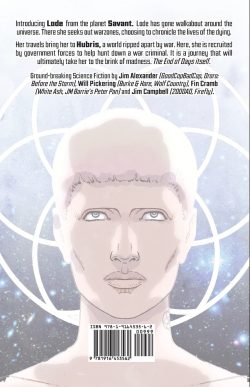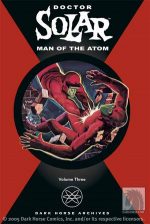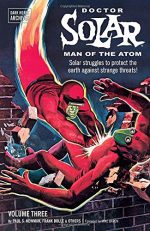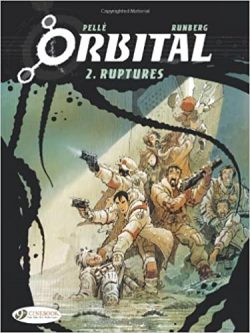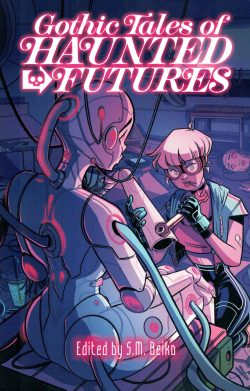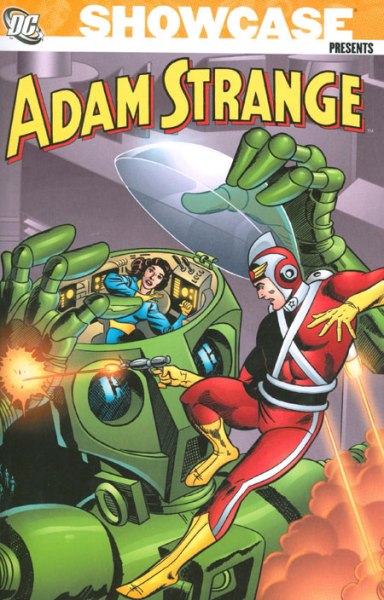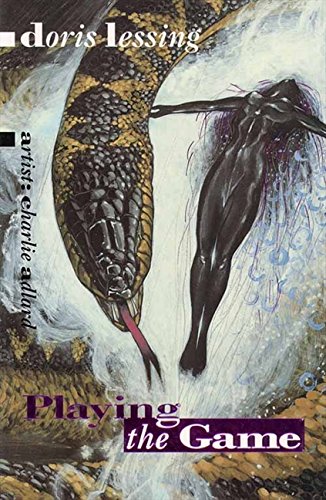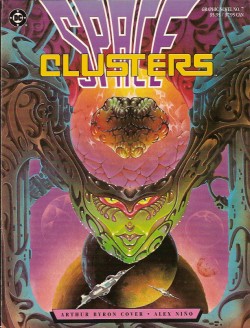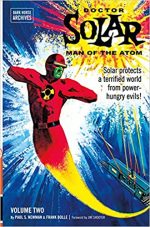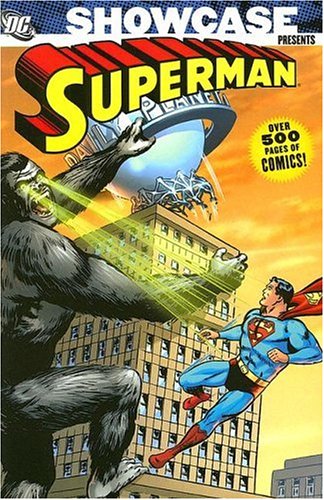
By Otto Binder, Jerry Siegel, Jerry Coleman, Bill Finger, Robert Bernstein, Wayne Boring, Al Plastino, Curt Swan, Kurt Schaffenberger & various (DC Comics)
ISBN: 978-1-4012-1041-0 (TPB)
Although we all think of Jerry Siegel & Joe Shuster’s iconic creation as the epitome of comic book creation, the truth is that very soon after his launch in Action Comics #1, Superman became a fictional multimedia star in the same league as Mickey Mouse, Popeye, Tarzan and Sherlock Holmes.
Far more people have seen or heard the Man of Steel than have ever read him – and yes, that does include the globally syndicated newspaper strips. By the time his 20th anniversary rolled around, he had become a radio star; helmed a series of 17 astounding animated cartoons; been turned into literature by George Lowther’s novel; and spawned two movies, He was a perennial success for toy and puzzle manufacturers and had just ended his first smash live-action television serial. In his future were many more, a stage musical, a franchise of stellar movies and an almost seamless succession of games, bubble-gum cards and TV cartoons, beginning in 1966 with The New Adventures of Superman and continuing ever since. Even Krypto got in on the small-screen act…
However, that’s not all there is to these gloriously engaging super-sagas culled from the Metropolis Marvel’s lead feature in Action Comics #258-277 and the all-star sagas from Superman #134-145 (reliving the period November 1959 to May 1961, and including selected snippets from Superman Annuals #1 & 2) presented in crisp, clean monochrome for this sterling second Showcase Presents collection. Of course, in an ideal world – or even just a little bit better than this one – we’d be able to see these tales in glorious full colour either on paper or digitally…
During the 1950s, even as his back-story was expanded and elaborated, Superman had settled into an ordered existence. Nothing could really hurt him, nothing ever changed, and pure thrills seemed in short supply. With the TV show supplying live action, the Comics Code-hamstrung funnybook writers concentrated on supplying wonder, intrigue, imagination and, whenever possible, a few laughs as well…
The wholesome intrigue and breathtaking fantasy commence here with Action Comics #258’s ‘The Menace of Cosmic Man’. This sharp mystery written by Bill Finger – illustrated by Wayne Boring & Stan Kaye – focuses on an impoverished European dictatorship which suddenly announces it has its own all-powerful costumed champion: drawing Lois Lane and Clark Kent into a potentially deadly investigation. Action #259’s hallucinogenic thriller ‘The Revenge of Luthor!’ (Jerry Siegel & Al Plastino) delivers a seemingly impossible clash between the Man of Tomorrow and his own younger self which almost led to death for Lois and school sweetheart Lana Lang…
Solo title Superman #134 (January 1960) sees a full-length epic from Otto Binder, Boring & Kaye as ‘The Super-Menace of Metropolis’ has the Caped Kryptonian apparently undertake a concerted attack upon humanity, leading to shocking revelations in ‘The Revenge Against Jor-El!’ before a blockbusting final battle against an unsuspected Kandorian foe in ‘Duel of the Supermen!’
There’s the usual heartbreak for Lois when Superman and Supergirl perpetrate a romantic hoax on the world to thwart a potential alien attack in ‘Mighty Maid!’ (Action #260, Binder & Plastino), as Superman #135 served up three Siegel stories beginning with the Plastino illustrated Untold Tale ‘When Lois First Suspected Clark was Superman!’ before ‘Superman’s Mermaid Sweetheart!’ (Boring & Kaye) reintroduces Clark’s college love Lori Lemaris in another superbly effective, bittersweet tear-jerker, after which Plastino’s ‘The Trio of Steel!’ finds the Man of Steel again battling his most impossible foe in a classy conundrum…
Action #261 revealed the secret history of ‘Superman’s Fortress of Solitude!‘ by unravelling a cunning criminal plot against the indomitable hero in a clever yarn from Siegel, Boring & Kaye, after which ‘When Superman Lost his Powers!’(#262, Robert Bernstein, Boring & Kaye) sees the Daily Planet staff trapped in another dimension where the Man of Tomorrow is merely mortal and Lois’ suspicions are again aroused…
Superman #136 began with ‘The Man who Married Lois Lane!’ (Bernstein, Boring & Kaye) wherein the frustrated reporter finally gives in, settling for a superman from the future with tragic results, after which another Untold Tale reveals how the world first learned ‘The Secret of Kryptonite!’ (Jerry Coleman & Plastino) and how, as ‘The Super-Clown of Metropolis!’, Superman is blackmailed into attempting to make a millionaire misanthrope laugh in a smart, character-driven yarn from Siegel & Plastino.
Action #263 introduced ‘The World of Bizarros!’ (Binder, Boring & Kaye) as the ghastly doppelganger uses an imperfect duplicator machine to create an entire race in his broken image, after which Superman #137 – ‘The Super-Brat from Krypton!’ by Siegel, Curt Swan & John Forte – reveals how an energy duplicate of baby Kal-El is raised by criminals to become ‘The Young Super-Bully’ before finally confronting his noble counterpart in ‘Superman vs. Super-Menace!’
In Action Comics #264, a clash with the newly-minted artificial race culminates in the Caped Kryptonian almost becoming ‘The Superman Bizarro!’ in a tense thriller from Binder, Boring & Kaye whilst ‘The “Superman†from Outer Space!’ in #265 (Binder, Swan & Forte) details the tragically short career of Hyper-Man, planetary champion of Earth-like world Oceania, before Superman #138 debuts ‘Titano the Super-Ape!’: a chimpanzee mutated into a Kryptonite-empowered King Kong clone with a devotion to Lois and big hatred for the Man of Steel: a beloved masterpiece by Binder, Boring & Kaye combining action, pathos and drama to superb effect.
‘Superman’s Black Magic!’ (Siegel & Plastino) balanced the epic tear-jerker with a clever yarn seeing the Action Ace instigate a devilish sting to catch superstitious crooks whilst ‘The Mermaid from Atlantis!’ ( Siegel, Boring & Kaye) finds newlywed Lori Lemaris attempt to trick Superman into finally proposing to Lois.
Action #266 has the heroic hunk ‘The Captive of the Amazons’ and trapped on another world. The queen wants the Man of Tomorrow for her sixth husband and is prepared to destroy Earth to make her dreams come true…
Superman #139 opens with ‘The New Life of Super-Merman!’ as the Caped Kryptonian and Lori scheme to marry Lois off to a nice, safe multi-millionaire who really loves her in a rather dated and potentially offensive tale by Siegel, Boring & Kaye, whereas ‘The Jolly Jailhouse!’ (Coleman & Plastino) is safe and solid entertainment, providing a light-hearted clash between a would-be dictator and the World’s Most Uncooperative political prisoner… Clark Kent.
‘The Untold Story of Red Kryptonite!’ (Binder, Boring & Kaye) then delivers a dramatic dilemma, a redefinition of the parameters of the deadly crimson mineral, and plenty of thrills with the Man of Steel forced to risk deadly danger and lots of informative flashbacks to rescue a sunken submarine…
Binder, Boring & Kaye produced spectacular 2-chapter clash ‘Hercules in the 20th Century!’ and ‘Superman’s Battle with Hercules!’ (Action #267-268, and separated here by the cover of all-reprint Superman Annual #1) as Luthor brings the Hellenic demi-god to Metropolis to battle “evil king†Superman. Events turn even more serious when the legendary warrior falls for Lois and marshals all the magical powers of the Olympians to destroy his unwitting rival…
Although later played for laughs, most of the earlier appearances of Superman‘s warped double were generally moving comic-tragedies, such as issue #140 wherein  Binder, Boring & Kaye’s ‘The Son of Bizarro!’ sees the fractured facsimile and wife Bizarro-Lois have a perfect, human baby. The fast growing tyke is super-powered but shunned by the populace of the world of monsters.
His simple-minded, heartbroken father has no choice but to exile his son in space where chance brings the lad crashing to Earth as ‘The Orphan Bizarro!’. Sent to the same institution where Supergirl resided, “Baby Buster†is soon a permanent headache for the Girl of Steel until a tragic accident seemingly mutates him. Eventually his distraught father comes looking for him at the head of an angry army of enraged Superman duplicates and a devastating battle is narrowly avoided with a happy ending only materialising due to the introduction of ‘The Bizarro Supergirl!’…
Action Comics #269 tells a clever tale of identity-saving when Lois tricks Clark into standing before ‘The Truth Mirror!’(Siegel, Swan & George Klein), whilst Superman #141 again shows the writer’s winning form in ‘Superman’s Return to Krypton!’ Illustrated by Boring & Kaye, the epic Grand Tragedy shows in ‘Superman Meets Jor-El and Lara Again!’ how an accident maroons the adoptive Earth hero in the past on his doomed home-world. Reconciled to dying there with his people, in ‘Superman’s Kryptonian Romance’ Kal-El finds love with soul-mate Lyla Lerrol, only to be torn from her side and returned to Earth against his will in concluding chapter ‘The Surprise of Fate!’
This bold saga was a fan favourite for decades thereafter, and remains one of the very best stories of the period.
In Action #270 Binder, Swan & Forte provide a whimsical interlude in ‘The Old Man of Metropolis!’ as the Metropolis Marvel glimpses his own twilight years whilst ‘Voyage to Dimension X!’ – Binder & Plastino in #271 – sees him narrowly escape his greatest foe’s latest diabolical plot.
Superman #142 opened with ‘Lois Lane’s Secret Helper!’ (Binder & Kurt Schaffenberger, as faithful Krypto tried to play matchmaker before ‘Superman Meets Al Capone!’ has the time-lost Man of Tomorrow clash with the legendary mobster (Binder, Boring & Kaye) before battling a wandering ‘Flame-Dragon from Krypton!’ with some helpful assistance from his best super-buddies in a sharp yarn from Siegel, Boring & Kaye.
Another prototype team-up featured in Action #272’s ‘Superman’s Rival, Mental Man!’: a clever criminal-sting by Siegel, Swan & Kaye centring around Lois’ unsuspected talents as a comic strip creator, whilst over in Superman #143, ‘The Great Superman Hoax!’ (Bernstein, Boring & Kaye) sees a criminal try to convince Lois that he is actually the Man of Might. ‘Lois Lane’s Lucky Day!’ (Siegel & Forte) then finds the daring reporter busting a crooked carnival – with a little covert Kryptonian help – before ‘Bizarro Meets Frankenstein!’ (Binder, Boring & Kaye) finds the befuddled duplicate invading Earth to prove he is the scariest monster of all time…
Action #273 has Superman turn the table on the pestiferous Fifth Dimensional pixie by invading ‘The World of Mxyzptlk!’– a light-hearted romp from Siegel & Plastino – and in the next issue lose his abilities to Lois in ‘The Reversed Super-Powers!’ (Siegel & Schaffenberger.
Superman #144 led with Siegel, Swan & Kaye’s combative thriller ‘The Super-Weapon!’, after which Siegel & Plastino revealed the Untold Tale of ‘Superboy’s First Public Appearance!’ before going on to describe the terrifying plight of Superman, Supergirl and Krypto as ‘The Orphans of Space!’
Action #275 delivers a classic clash with alien marauder Brainiac, whose latest weapon is ‘The Menace of Red-Green Kryptonite!’ (Coleman, Boring & Kaye) after which Superman #145 opens on a salutary fable by Siegel, Swan & Kaye proving why Lois can’t be trusted with ‘The Secret Identity of Superman!’
Bernstein & Plastino’s ‘The Interplanetary Circus!’ then holds Earth hostage until the Man of Steel agrees to join them, but even after outwitting those interplanetary scoundrels, Superman is utterly flummoxed by the incredible events of ‘The Night of March 31st ‘ – a deliciously surreal, whimsical and bizarre mystery-puzzle from Siegel, Swan & Sheldon Moldoff.
This second superb collection concludes with the stirring cover of Superman Annual #2 and a scintillating double-page Map of Krypton by Siegel & Plastino which enflamed the imagination of every kid who ever saw it…
Superman has proven to be all things to all fans over his decades of existence, and with the character undergoing another radical overhaul at this time, these timeless tales of joyous charm and wholesome wit are more necessary than ever: not just as a reminder of great times past but as an all-ages primer of wonders still to come…
© 1959, 1960, 1961, 2006 DC Comics. All Rights Reserved.
